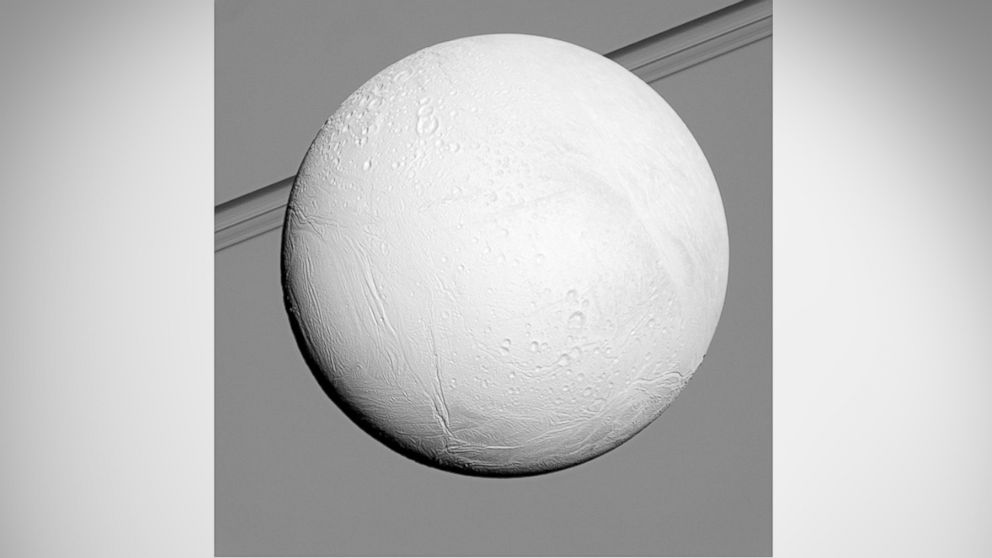NASA's Cassini Probe Gets Up Close With Saturn's Moon Enceladus
Scientists hope to better understand history of the large, icy moon.

— -- NASA's Cassini probe this morning made its first of three final flybys of Saturn's large, icy moon Enceladus, passing within 1,142 miles of its north pole.
Images from the encounter are expected to arrive on Earth in one or two more days, according to NASA, and could shed new light on the moon's mysterious past. Scientists have been fascinated with Enceladus since the discovery a decade ago of continually erupting fountains of icy material and believe it is a potential location in the search for a habitable environment.
"We've been following a trail of clues on Enceladus for 10 years now," Bonnie Buratti, a Cassini science team member at NASA's Jet Propulsion Laboratory, said in a statement. "The amount of activity on and beneath this moon's surface has been a huge surprise to us. We're still trying to figure out what its history has been, and how it came to be this way."
The next flyby will occur later this month when Cassini passes within 30 miles of Enceladus' south pole, moving through icy spray from the moon and gathering images and data that will give new insights about what is going on beneath its frozen surface. The final flyby will happen in December at an altitude of 3,106 miles with the goal of examining heat from the moon's interior.
Launched in 1997, the Cassini mission arrived in the Saturn system in 2004 where it has been working ever since to study the gas giant and its dozens of moons. The probe's mission is scheduled to end in September 2017 when it will make a fatal plunge into Saturn's atmosphere.



